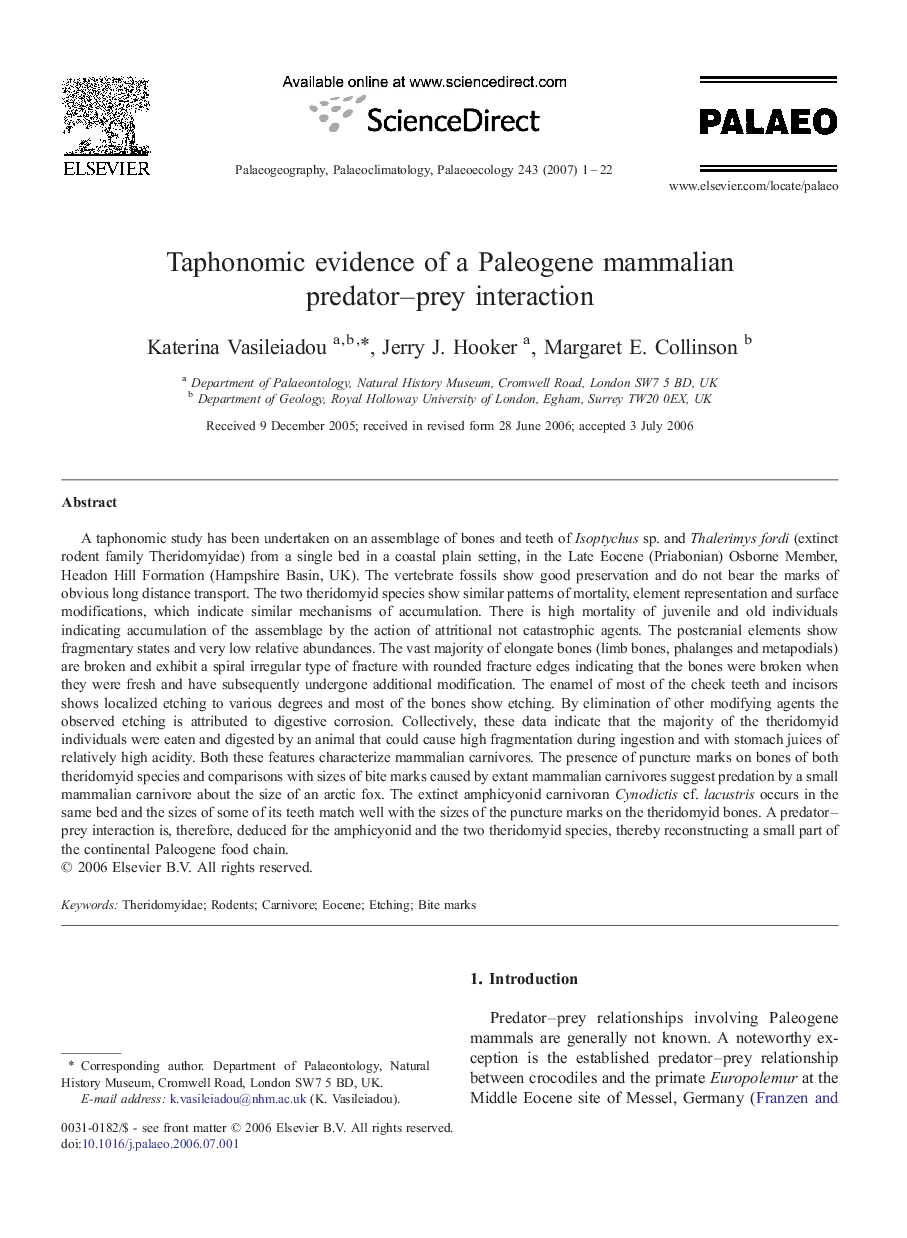| کد مقاله | کد نشریه | سال انتشار | مقاله انگلیسی | نسخه تمام متن |
|---|---|---|---|---|
| 4468984 | 1622361 | 2007 | 22 صفحه PDF | دانلود رایگان |

A taphonomic study has been undertaken on an assemblage of bones and teeth of Isoptychus sp. and Thalerimys fordi (extinct rodent family Theridomyidae) from a single bed in a coastal plain setting, in the Late Eocene (Priabonian) Osborne Member, Headon Hill Formation (Hampshire Basin, UK). The vertebrate fossils show good preservation and do not bear the marks of obvious long distance transport. The two theridomyid species show similar patterns of mortality, element representation and surface modifications, which indicate similar mechanisms of accumulation. There is high mortality of juvenile and old individuals indicating accumulation of the assemblage by the action of attritional not catastrophic agents. The postcranial elements show fragmentary states and very low relative abundances. The vast majority of elongate bones (limb bones, phalanges and metapodials) are broken and exhibit a spiral irregular type of fracture with rounded fracture edges indicating that the bones were broken when they were fresh and have subsequently undergone additional modification. The enamel of most of the cheek teeth and incisors shows localized etching to various degrees and most of the bones show etching. By elimination of other modifying agents the observed etching is attributed to digestive corrosion. Collectively, these data indicate that the majority of the theridomyid individuals were eaten and digested by an animal that could cause high fragmentation during ingestion and with stomach juices of relatively high acidity. Both these features characterize mammalian carnivores. The presence of puncture marks on bones of both theridomyid species and comparisons with sizes of bite marks caused by extant mammalian carnivores suggest predation by a small mammalian carnivore about the size of an arctic fox. The extinct amphicyonid carnivoran Cynodictis cf. lacustris occurs in the same bed and the sizes of some of its teeth match well with the sizes of the puncture marks on the theridomyid bones. A predator–prey interaction is, therefore, deduced for the amphicyonid and the two theridomyid species, thereby reconstructing a small part of the continental Paleogene food chain.
Journal: Palaeogeography, Palaeoclimatology, Palaeoecology - Volume 243, Issues 1–2, 10 January 2007, Pages 1–22